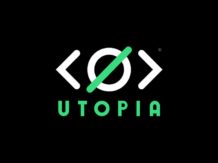Centralized stablecoin projects issued by specific companies have dominated cryptocurrency trading in DeFi space for years.
It doesn’t matter whether you swap tokens on Uniswap, take out a loan with Aave or carry out a leveraged trade via dYdX – almost nothing works in DeFi without stablecoins such as Tether (USDT) or USD Coin (USDC).
Since January 1, 2021, the market capitalization of stablecoins in DeFi protocols has increased from around $20 billion to more than $90 billion now (+360 percent).
Most of this growth has come from stablecoins USDT, USDC, and Binance USD (BUSD). Together, they are responsible for almost 90 percent of the total stablecoin market cap in DeFi.
- 1. USD Coin (USDC) – 36.88 Billion US Dollars.
- 2. Tether (USDT) – 28,21 Milliarden US-Dollar.
- 3. Binance USD (BUSD) – US$14.89 Billion.
What are protocol-native stablecoins?
In recent years, the risk associated with such centralization has been underestimated.
How decentralized is the DeFi ecosystem really when the major stablecoins are in the hands of a few large corporations?
The ban on crypto mixer Tornado Cash recently demonstrated how powerful stablecoin companies can be in DeFi.
Shortly after the US banned Tornado Cash, Circle, the company behind USDC, froze all USDC that had ever interacted with Tornado Cash. As a result, thousands of mostly innocent users were no longer able to transfer their USDC tokens without warning.
Therefore, especially with DeFi protocols or supposedly decentralized stablecoins that are highly dependent on centralized stablecoins, one can wonder how decentralized they really are.
In view of these developments, more and more DeFi projects have been looking at how to reduce their dependency on stablecoins such as USDC or USDT in recent months. This has led to the emergence of so-called protocol-owned stablecoins.
So, protocol-native stablecoins are stablecoins created by DeFi projects that usually pursue other products or services in DeFi (token swaps, lending…).
Aave and Curve launch stablecoins
A prime example of protocol-owned stablecoins are GHO and crvUSD from the two DeFi top dogs Aave and Curve. Both of the DeFi projects’ decentralized autonomous organizations (DAOs) recently announced that they intend to launch protocol-owned stablecoins.
Both projects are usually dedicated to other tasks within the DeFi ecosystem. Curve is a decentralized exchange (DEX) and Aave is a lending DeFi protocol. The release of a protocol-specific stablecoin is therefore new territory for both protocols.
Both Aave (GHO) and Curve (crvUSD) stablecoins will be overcollateralized stablecoins similar to MakerDAO’s DAI. What does that mean?
Unlike centralized stablecoins like Circle’s USDC or Tether’s USDT, which are backed by hard cash and assets, crvUSD and GHO’s value is backed by escrowed cryptocurrencies.
These types of stablecoins are known as overcollateralized stablecoins. This is because their total value significantly exceeds the value of crvUSD or GHO tokens in circulation.
You can find out what other types of stablecoins there are here.
It is currently still unclear when exactly the two protocol-specific stablecoins will come onto the market and how they will ultimately affect the token properties (tokenomics) of AAVE and CRV.
That’s why DeFi projects want their own stablecoins
On the one hand, DeFi projects, with their own stablecoins, want to reduce their dependence on centralized stablecoin providers. On the other hand, by issuing their own stablecoin, DeFi protocols can participate in a market that has grown tremendously in recent years.
Disadvantages of USDT, USDC and Co. for DeFi
Dependence on centralized stablecoins like USDT or BUSD is extremely dangerous for DeFi as they can be frozen. Central stablecoin providers such as Binance or Circle thus have immense power and can theoretically bring down entire DeFi protocols on their own.
The reliance on these stablecoins therefore makes much of the DeFi world hugely vulnerable to censorship. For example, if Circle gets into trouble with the authorities, or certain reserves for the stablecoin USDC are confiscated or stolen, entire DeFi ecosystems could collapse as the reserves of DeFi protocol smart contracts suddenly run out.
Advantages of stablecoins like crvUSD and GHO
By moving away from centralized stablecoins, the protocols can achieve a higher level of security and decentralization.
Depending on how a DeFi protocol designs its own stablecoin, the project’s tokenomics can also be improved.
For example, Curve could add more liquidity to its platform with crvUSD by allowing users to use their existing liquidity positions on Curve as reserves to generate crvUSD, which would benefit Curve’s CRV token directly.
Conclusion
Ultimately, DeFi projects with their own stablecoins can not only increase the censorship resistance of their protocols, but they can also integrate them into their protocols in a useful way.
Stablecoins currently account for around 14 percent of the total cryptocurrency market cap. It is likely that the stablecoin industry will continue to grow as both the digitization of our financial system and the crypto industry and DeFi ecosystem continue to gain momentum.
For DeFi projects, a protocol-owned stablecoin can therefore make sense not only for reasons of decentralization, but also for reasons of further development of their own platforms.
Looking to buy Ethereum (ETH)?
This is possible via eToro, among other things. eToro offers investors, from beginners to experts, a comprehensive crypto trading experience on a powerful yet easy-to-use platform. We took a close look at eToro.
To the eToro review














